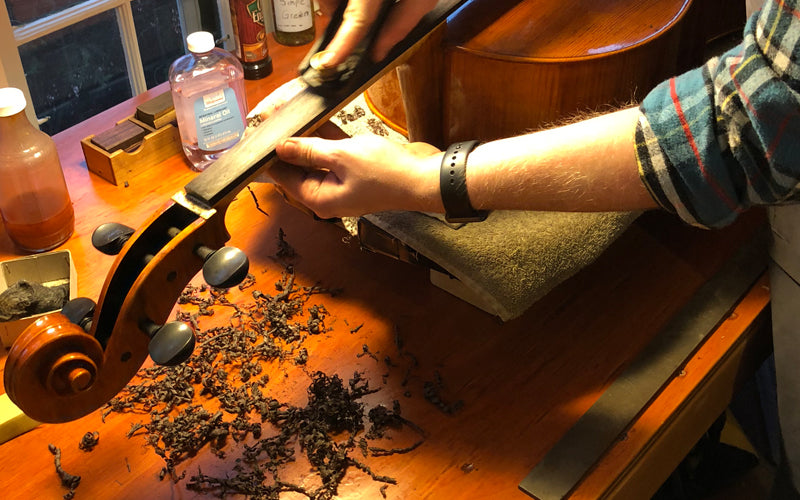Cello Wolf Tones and the Wolf Eliminator
Cello Wolf Tones
It is frightfully common - on nearly 75% of cellos in existence - and it is easily remedied in most cases, yet it is still something that causes confusion and frustration in cellists from young to old, from beginner to seasoned veteran - the wolf tone. It´s difficult to describe a ´wolf tone´, but essentially it comes across as a warbling tone where the sound of the note being played actually skips from the note to a harmonic or series of harmonics, and back very rapidly. There are a number of theories on the cause of the wolf tone, but a widely general consensus is that it has to do with a conflict of fundamental tones within the instrument itself, and the instrument is unable to contain the massive amounts of vibrations caused by conflict and still create one tone, but rather it breaks up the tone and the sound comes across as a ´wolf´.
The good news is that the wolf tone can be minimized almost to the point of being inaudible with a device called the wolf eliminator, some of which are relatively inexpensive, small, and easy to install. There are several types of wolf eliminators - with the two basic groups being ´interior´ and ´exterior´. Interior wolf eliminators are typically custom made by experienced luthiers and are professionally installed. The more common variety is the exterior wolf eliminator.

fig. 1 - solid brass exterior wolf eliminators (shown in various weights)
Exterior wolf eliminators come in two common varieties, the traditional brass cap with tightening screw and rubber core, and the new solid brass version, shown in figure 1. These devices are installed on the offending string between the bridge and tailpiece. What a wolf eliminator does is reduce the vibrations emanating from the string, and thereby reducing the vibrations occurring from the wolf and making it nearly inaudible. The disadvantage is that wolf eliminators do reduce vibrations from the entire string, so some tonal loss may be experienced, but if your string is producing too much tone for the instrument itself to handle without producing a wolf tone, perhaps it is a good thing to stifle it a bit. Wolf tones are most typically found on the notes of the upper position on a cello - most commonly E, F and F#. The position of the wolf eliminator on the string can be customized to target these very notes by moving it to various positions on the string itself.



